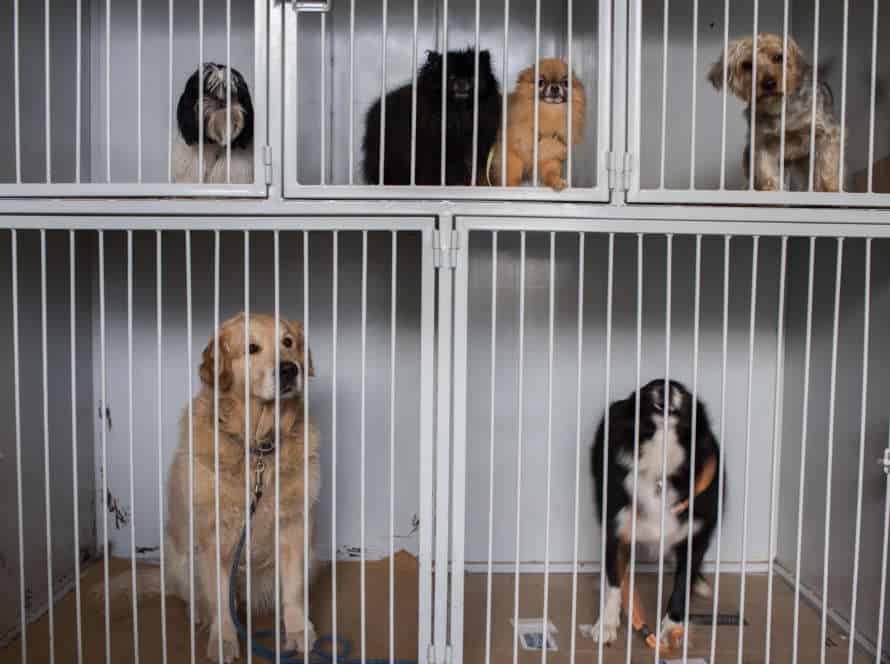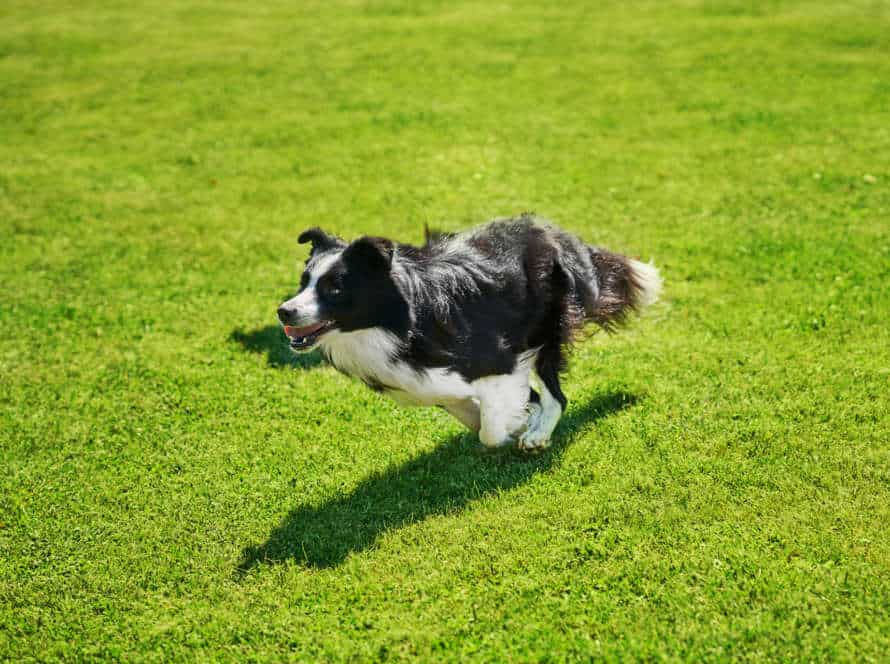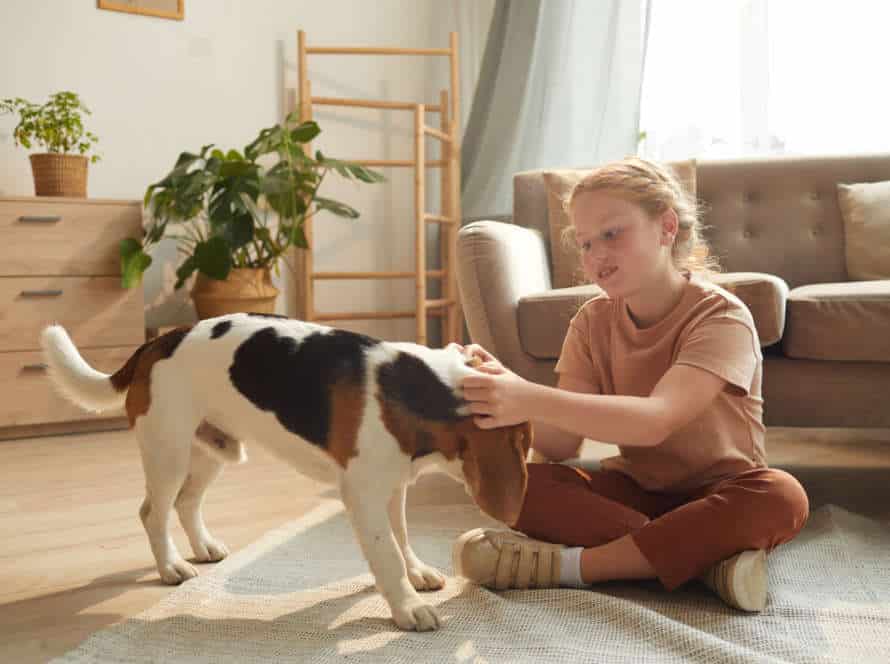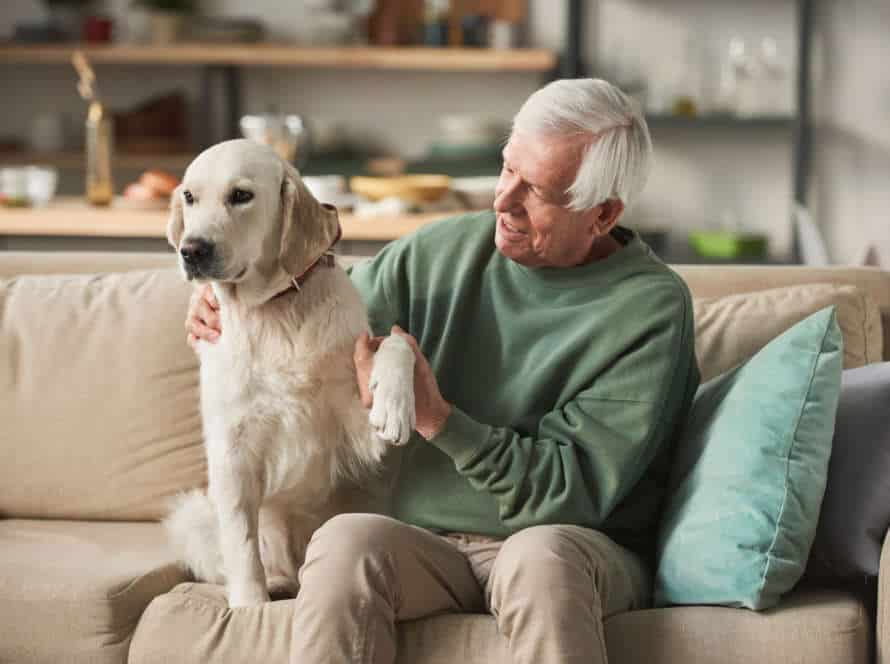How to Recognize and Address Overstimulation in Puppies
Puppies often get overstimulated, leading to bad behavior and ill health. Here are some signs of overstimulation and how to help:
Signs:
- Excessive barking/whining
- Jumping/biting
- Hiding/cowering
- Panting/shaking/pacing
Ways to Help:
- Make a calm atmosphere with low noise, people and other pets.
- Give a quiet, comfortable place for the puppy to relax.
- Train the puppy to recognize and obey your commands for calm behavior.
- Carefully introduce the pup to new experiences and stimuli.
Understanding and tackling overstimulation can help puppies live a happy and healthy life.
Recognizing Overstimulation in Puppies
Missing overstimulation in puppies? It can happen! Signs to look out for:
- Shaking
- Panting
- Yawning
- Licking
If any of these signs appear, it’s time to take action. We’ve got the 411 on how to identify and address overstimulation in puppies. Read on!
Signs of overstimulation in puppies
Pups are full of energy and curiousness, but sometimes they get too stimulated. Here are the top signs of being overstimulated that all dog owners should know:
- Excessive Biting and Chewing: A stressed pup may chew and bite a lot.
- Withdrawal or Hiding: They may try to find a quiet place, or not respond to commands.
- Hyperactivity: Too much energy may make them excited and hard to settle down.
- Aggressive Behaviors: Overstimulation can cause irrational behavior, like growling, barking, or biting.
If you see these signs, it’s important to remove the pup from the stimulator and give them a calming and safe environment. Then, introduce stimulations gradually.
Common situations that can overstimulate a puppy
Puppies can become overstimulated easily, resulting in stress and anxiety. It’s important to recognize the signs and address the situation. Here are a few common causes of overstimulation and how to help.
- New environment: Introduction to new surroundings can be overwhelming, leading to panting, trembling, or hiding. To ease the transition, offer a safe place with familiar items.
- Too much attention: Too much attention can cause jumping, biting, and barking. Give them alone time or redirect their attention to toys or treats.
- Loud noises: Loud noises like thunder, fireworks, or sirens can cause barking or whining. To help, create a comfortable and safe space, blocking out noise and distractions.
Overstimulation can have a negative effect on puppies. Recognizing the signs and addressing them is essential for their health and happiness.
Understanding the difference between overstimulation and normal puppy behavior
It’s vital to know the contrast between overstimulation and typical pup conduct to give your furry mate a supporting climate that advances development.
Typical pup conduct involves playfulness, interest, and sometimes fits of fervor. These activities are necessary for physical and mental advancement, assisting pups with investigating their environment.
Overstimulation, however, happens when a pup gets excessively energized, apprehensive, or overpowered. It may cause physical manifestations, for example, increased pulse, panting, and broadened understudies. Overstimulation can result in negative conduct, like biting, gnawing, or excessive yelping.
Here are a few hints to perceive and address overstimulation in pups:
- Watch for indications of disturbance and overstimulation, for example, yelping, panting, and biting.
- Expel the pup from the circumstance causing the overstimulation.
- Give a quiet climate with little sensory incitement, such as a tranquil room with least action.
- Take regular breaks during playtime to stay away from overstimulation.
Pro tip: Early socialization and positive fortification preparing can help forestall overstimulation in pups and support sound conduct designs.
Addressing Overstimulation in Puppies
Awareness of overstimulation in puppies is essential. It can give rise to stress and anxiety. There are multiple ways it can show – like barking, whining, and hyperactivity. Knowing the causes and how to respond is vital for a content and healthy pup. Here, we look into recognizing and dealing with overstimulation in puppies.
Create a quiet space for your puppy to relax
Overstimulation in pups can be seen in different ways, such as barking too much, biting, or jumping. It’s essential to spot the signs of overstimulation and fix it. You can do this by making a peaceful and calm environment for your pet.
Here’s how:
- Find a quiet spot in your home, away from all the noise and commotion.
- Get a comfortable and cozy crate or bed for your pup.
- Place soft blankets and toys to make the space familiar.
- Play some white noise or calming music to help your puppy relax and make external noise less noticeable.
Pro tip: Keeping your pet’s space peaceful and tranquil consistently will help avoid overstimulation, and make them happier and healthier.
Use calming tools and techniques for puppies
Puppies get overstimulated easily, resulting in anxious and aggressive behaviour. Here are some techniques to help them relax:
- Designate a quiet and comfortable spot for the puppy.
- Utilise calming methods, such as playing soft music, using aromatherapy, or spraying pheromones.
- Ensure your puppy gets enough playtime and exercise to burn off energy.
- Train the puppy commands like “sit” and “stay” to help them settle down.
- Give the pup puzzle and treat-dispensing toys, to keep their brain busy and divert their energy.
By doing this, you can prevent overstimulation and create a peaceful and cheerful atmosphere for your puppy to flourish in.
Gradually expose your puppy to new situations
To stop overstimulation, which can lead to anxiety, fear and aggression in your puppy, gradually introduce them to new situations.
It’s important to do this slowly and safely. Here are some steps:
- Start by exposing them to low-stress situations such as different textures and sounds indoors.
- Gradually move onto new environments, like parks, streets, etc. Use a leash and reward with treats and praise.
- Introduce your pup to new people and pets one by one, in a neutral place. Don’t overwhelm them with too many at once.
- Keep an eye on their body language. Signs of stress include trembling, panting and excessive barking. Respond with kindness.
Pro tip: Training and socialization are key to managing overstimulation in puppies. Talk to a professional trainer to make a plan that works for you both.
Training exercises to help regulate your puppy’s emotions and reactions
Puppies can have trouble with overstimulation, which can result in behavioral difficulties. Exercises for training can assist in managing your puppy’s emotions and reactions. Here’s some that may be helpful:
- Desensitization Training: Introduce your pup to different environments, sounds and experiences at a slow rate. This helps them to build confidence and be comfortable with novelties.
- Positive Reinforcement Training: Praise and reward your pup for good behavior with treats and affection. This will help them to respond positively to stimuli.
- Impulse Control Training: Teach your puppy to control their reactions to excitement or overstimulation. Commands like “down-stay” or “sit-stay” can help manage their emotions.
- Socialization Training: Gradually let your puppy interact with other dogs, people and animals. This will keep them from feeling overwhelmed in social situations.
By implementing these exercises, owners can help their puppies regulate their emotions and reactions. This will help them form healthy behaviors for life.
Seek the help of a professional trainer or behaviorist if needed.
Puppies can act out in negative ways if they’re overstimulated – such as biting, destructive chewing, whining, and even aggression. It’s normal for them to be excited, but if it gets too much, it’s time to address the issue.
Here are signs of overstimulation in puppies:
- Pacing & restlessness
- Barking & whining
- Nipping & biting
- Excessive panting
- Dilated pupils
If you spot these signs, intervene and create a quiet, peaceful environment for your pup. If the behavior doesn’t stop, it’s best to talk to an expert trainer or behaviorist to get to the root of the issue and stop it from happening again.
Frequently Asked Questions
Q: What is overstimulation in puppies?
A: Overstimulation in puppies occurs when they are exposed to too much excitement, noise, or activity. This can lead to behavioral issues and anxiety.
Q: How can I recognize overstimulation in my puppy?
A: Signs of overstimulation in puppies include excessive barking, biting, jumping, panting, and restlessness. They may also become aggressive or shy away from attention.
Q: What are some common triggers for overstimulation in puppies?
A: Some common triggers for overstimulation in puppies include loud noises, large crowds, unfamiliar people or pets, intense play, and too much physical contact.
Q: How can I address overstimulation in my puppy?
A: It’s important to monitor your puppy’s behavior and remove them from overstimulating situations when necessary. Provide them with a quiet and safe space to retreat to when they become overwhelmed. Positive reinforcement training and mental stimulation exercises can also help to reduce anxiety and manage overstimulation.
Q: Can overstimulation be harmful to my puppy’s health?
A: Overstimulation can lead to high levels of cortisol, the stress hormone, which can have negative effects on a puppy’s health, including weakened immune system, digestive issues, and behavioral problems.
Q: When should I seek professional help for my puppy’s overstimulation?
A: If your puppy’s overstimulation is severe or causing significant behavioral or health issues, it may be necessary to consult with a veterinarian or professional dog trainer for guidance and support.







